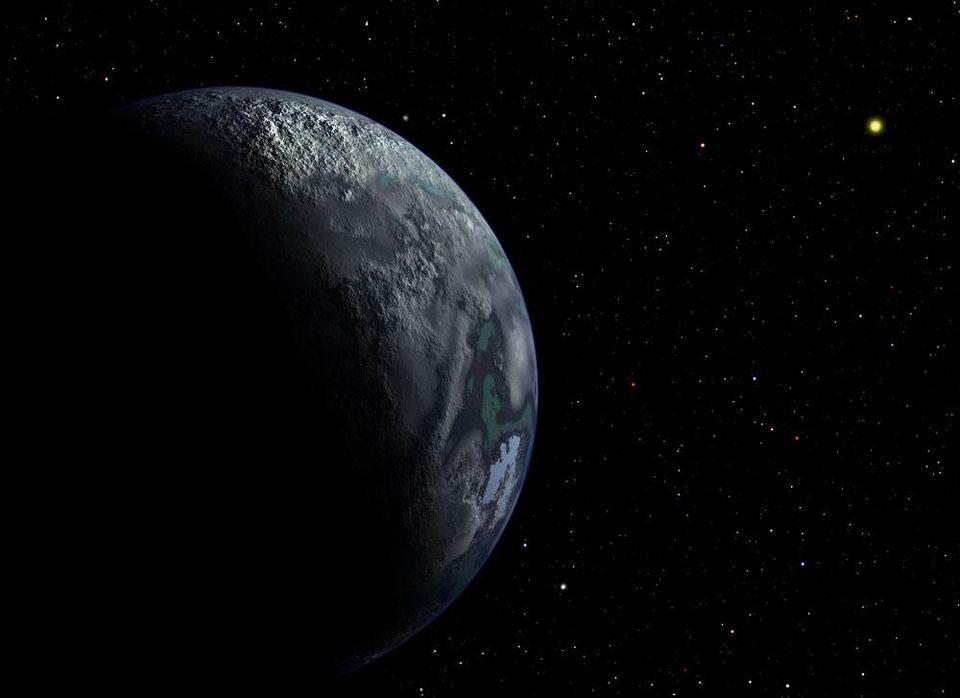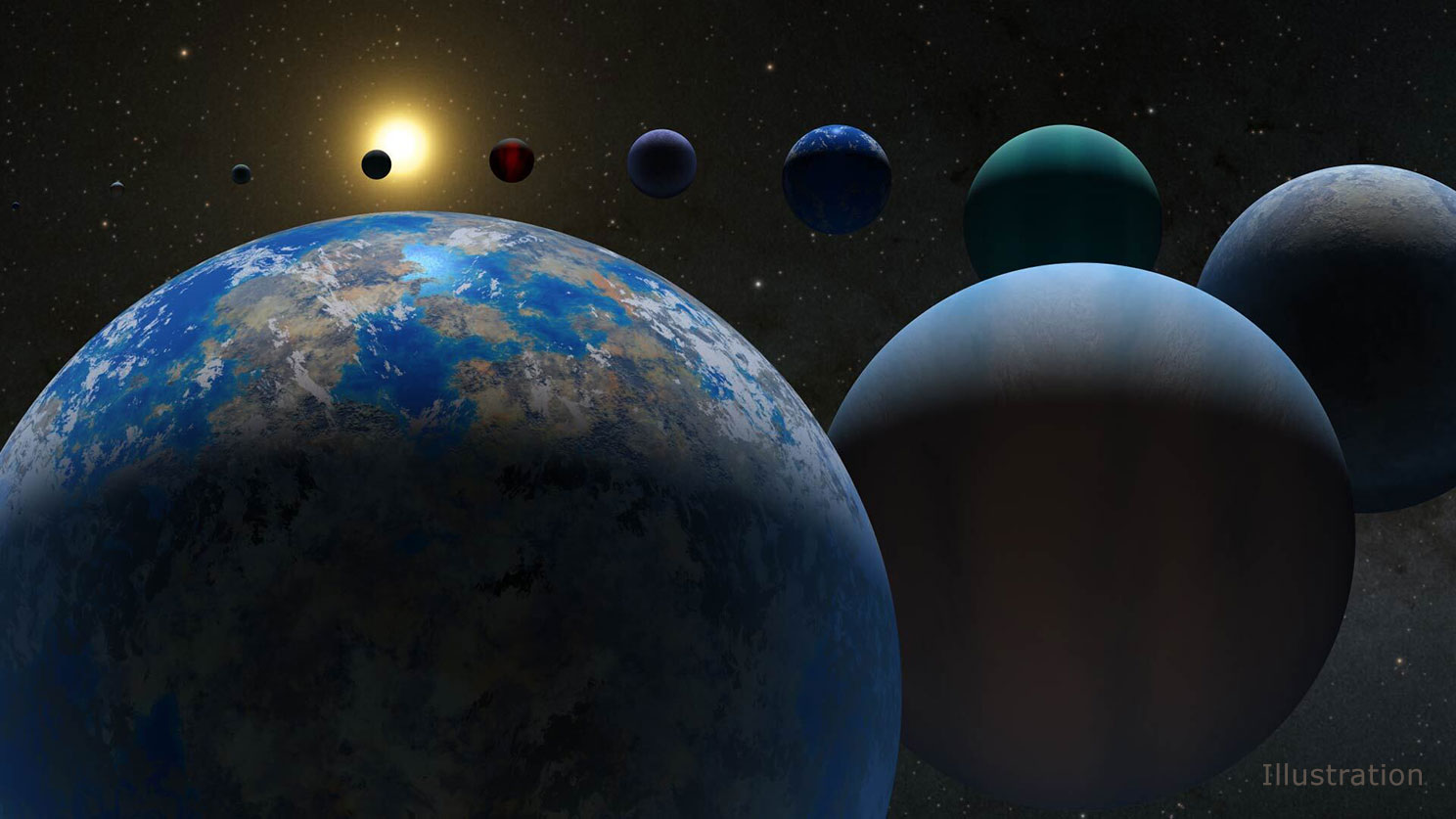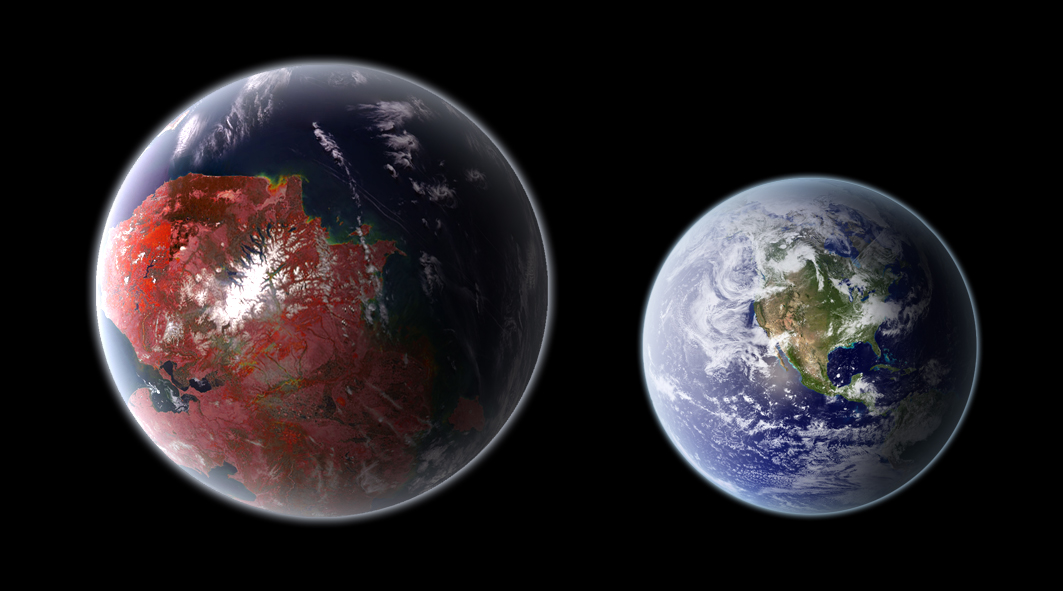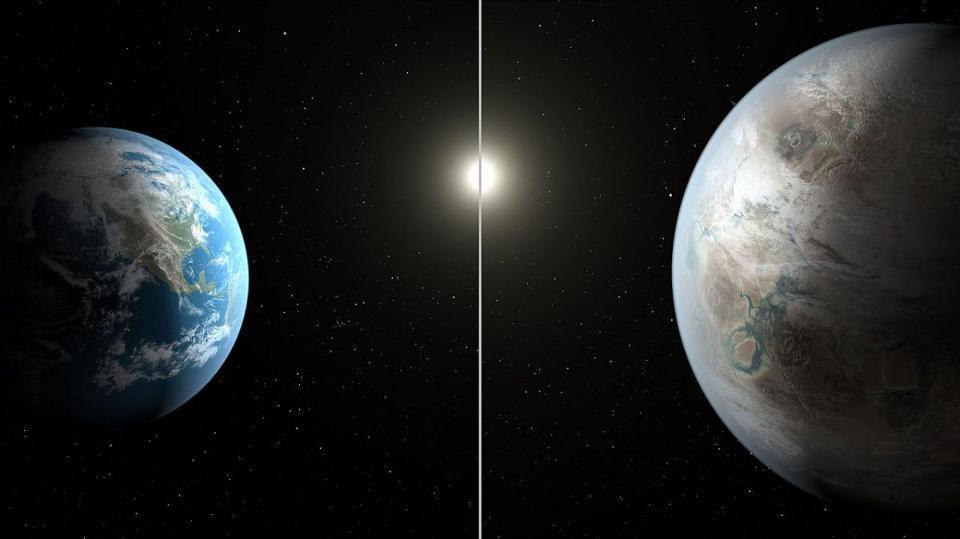At last: astronomers catch a star eating its innermost planet
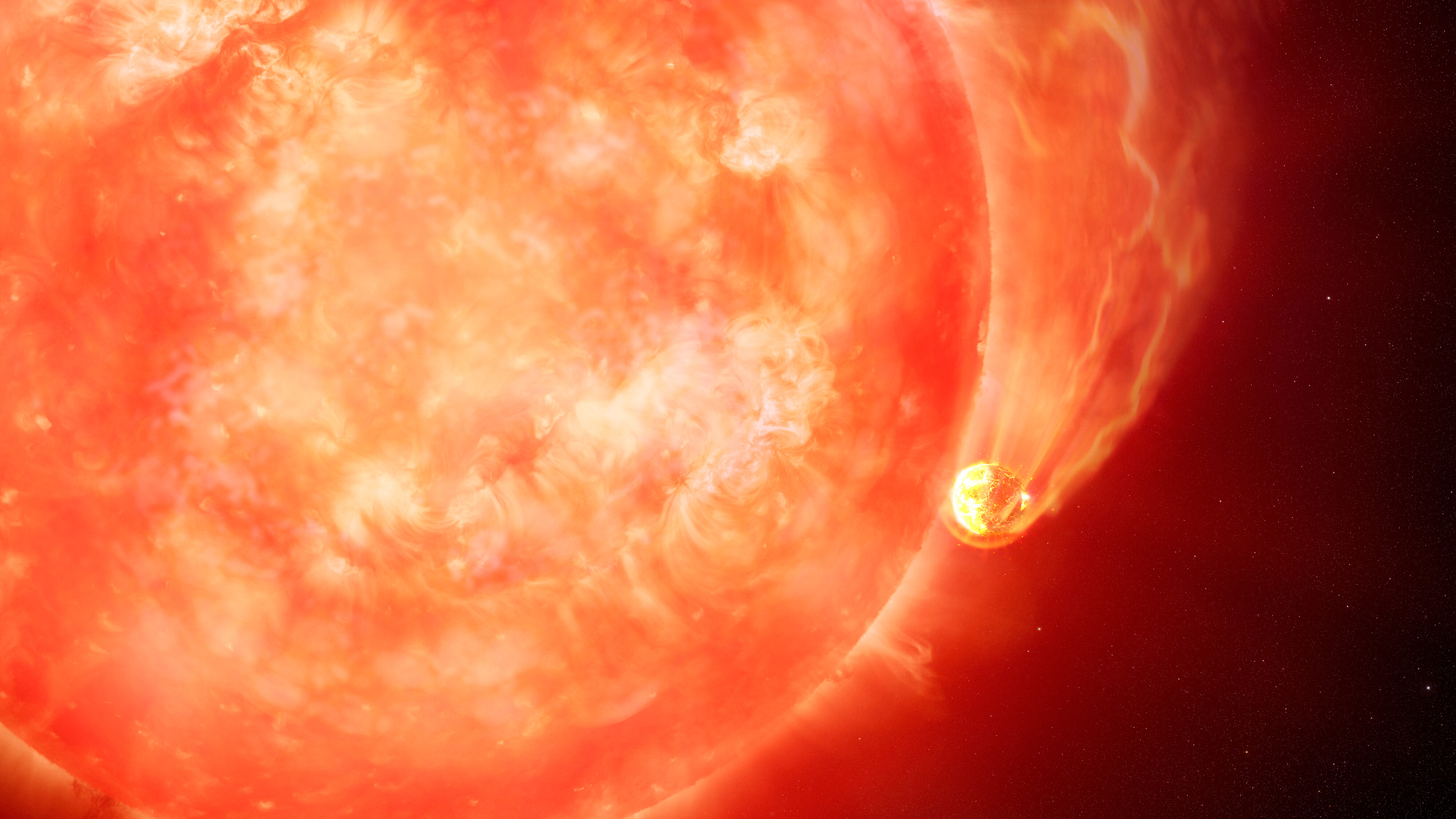
International Gemini Observatory/NOIRLab/NSF/AURA/M. Garlick/M. Zamani
- As stars burn through the fuel in their cores, they expand and evolve: becoming subgiants and eventually true red giants, expanding up to over 100 times their initial size.
- This paints a dire picture for their innermost orbiting planets, as many of them will be eventually devoured by their expanding parent star.
- For the first time, astronomers serendipitously caught a star in the act: eating its innermost planet. Here’s what we learned, and the science that got us there.
If you observe the Universe closely enough, with wide-field views and for long enough periods of time, even the rarest of cosmic occurrences will eventually be caught red-handed. In the early days of astronomy, the stars in the night sky appeared static and unchanging, with only very rare exceptions. As we began watching and recording the cosmos more closely, a number of subtle changes were seen to occur.
- Some stars would temporarily brighten for a brief period of time, before fading back to their original brightness: a classical nova.
- Other stars would brighten-and-fainten periodically: the first examples of variable stars, now known to be common throughout the Universe.
- And on very rare occasion, a new point of light would dramatically appear, shining incredibly bright before fading away over weeks, months, or even years: a supernova explosion.
Over time, greater numbers, types, and varieties of these phenomena were seen: transient events, where objects in the night sky are seen to change over time.
One type of transient event that must occur would be when a Sun-like star begins to run out of its core fuel, expanding and swelling to many times its original size as it evolves. Eventually, the innermost planet would come into contact with the star’s photosphere, causing it to be devoured entirely. For the first time, astronomers have discovered exactly this behavior in action: a star caught devouring its closest planet. Here’s the remarkable story of how we found it, plus what it’s taught us about our own Solar System’s eventual fate.

If you want to look for a specific type of event, like a star devouring a planet that orbits it, you can’t simply build a single observatory to go out and search for it. The Universe is too messy a place for that; many objects will brighten-and-fainten over time, and no matter what wavelength of light you look in — no matter where you look or for how long — no one, single observation is going to unambiguously reveal what it looks like when a star devours a planet.
Fortunately, we don’t rely on just a single observation, or even a single observatory, to piece together what happens somewhere in the Universe. We have a combination of observatories, monitoring different parts of the sky at different times and in different wavelengths, including some observatories that watch (nearly) the whole sky over and over again, that we use together to reconstruct what happens.
We also have a substantially impressive theoretical understanding of how many different physical phenomena work, and an observational record of a great many classes of objects that serve as “classical” examples of what those phenomena look like. It’s by synthesizing all of this knowledge together in a coherent way that we’re able to come up to the modern frontiers of our scientific knowledge, and that enables us to take the next giant steps forward.

In the recent past, we’ve identified a whole class of new transient objects through exactly this approach: by combining our theoretical knowledge with a suite of multiwavelength observations. In the optical, we have all-sky (or nearly all-sky) observatories that scan the sky regularly, looking for periodic changes. These include telescopes such as Pan-STARRS in Hawaii and the Zwicky Transient Facility at Palomar Observatory. In other wavelengths of light, we have the infrared eyes of NEOWISE in space and X-ray and gamma-ray views from observatories such as Swift, INTEGRAL and Fermi.
The combination of these different views of the sky, including the fact that the entire sky is covered regularly and periodically by these observatories, has helped us reconstruct a number of novel classes of events. These include:
- tidal disruption events, where stars are torn apart from passing too close to a black hole,
- cocooned supernovae, also known as COW-like events,
- two stars merging together, where the larger star subsumes the smaller one,
- gamma-ray bursts,
- and even bursts or flares coming from the supermassive black holes at the centers of active galaxies.
It truly is a dynamic, changing Universe that we live in.
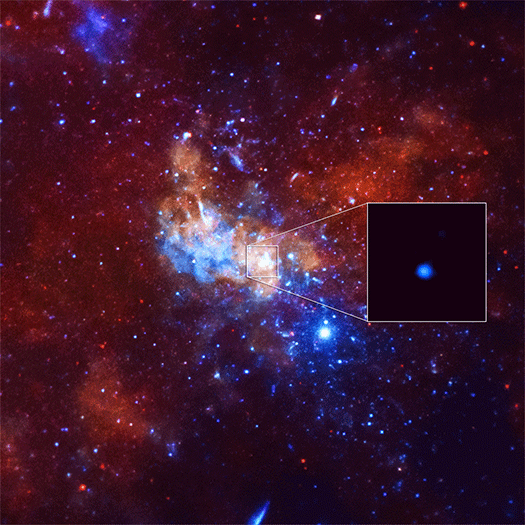
But even though previous studies have revealed many planets orbiting extremely close to their parent stars, no one had ever seen a star actually “eat” one of its orbiting planets before. From a theoretical perspective this makes sense. When a star like the Sun runs out of hydrogen fuel in its core, it starts to expand, which it does in stages.
- First, it swells to become a subgiant star, roughly doubling in size and burning hydrogen in a shell around an inert helium core for tens of millions of years.
- Then, at the end of this subgiant phase, it swells into a red giant more than ~100 times the size of the original star, which expands rapidly over a timescale of only a few tens of thousands of years.
- And later, after igniting its core’s helium, it will gradually blow off its outer layers, eventually running out of fuel and contracting down into a planetary nebula/white dwarf combination.
Any planets that are unlucky enough to be close enough to their parent star during these phases will experience first an increase in the drag force it experiences as more and more solar particles strike it, causing its orbit to decay, followed by “contact” with the solar photosphere. At that point, it rapidly gets swallowed, potentially causing global changes in the appearance of the star itself.
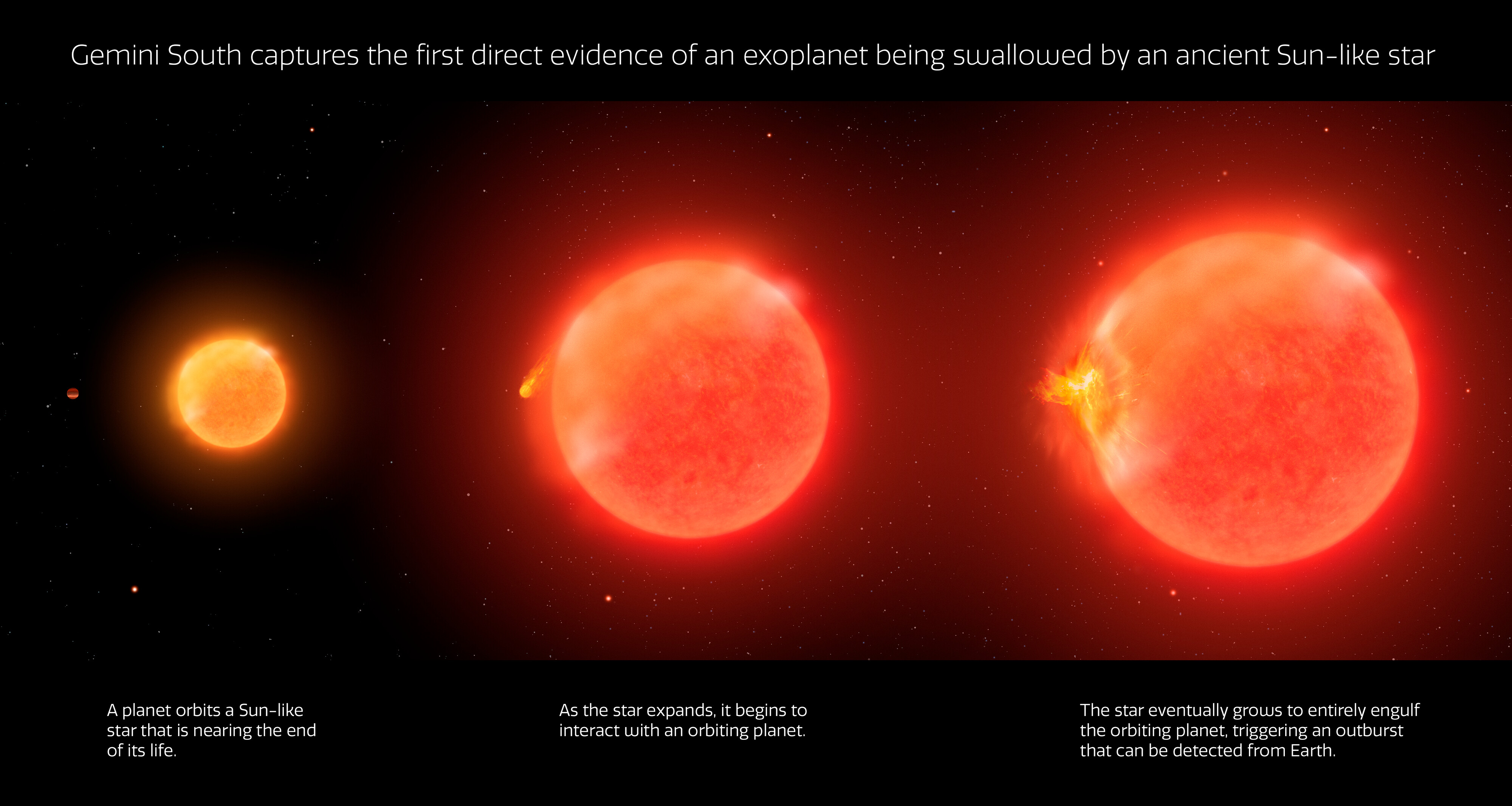
But that’s only the theoretical scenario; observers weren’t even certain what they should have been looking for prior to this event. In fact, when it comes to the observatories that monitor the entire sky, like the Zwicky Transient Facility, the most common type of event they see is novae: stars that brighten by a factor of a few thousand over the course of a week or so, and then fade away. The way you typically confirm, “Yes, that’s a nova we’re seeing,” is to perform follow-up observations on the brightened star and take its spectrum: breaking its light up into constituent components. If it’s a nova, you’ll see hot gas: gas that exhibits varying degrees of ionization dependent on its density and the amount of heat injected into it.
And that’s where one particular object that they saw started to stand out as relatively unusual. One source looked like a relatively wimpy nova: brightening by a factor of a few hundred over the timespan of a few days. But when they took the spectrum of that star, instead of seeing hot gas of a particular temperature, density, and ionization, they saw no hot gas at all. Instead, the spectral signature showed a large amount of molecular absorption lines, which require gas at cold temperatures. Somehow, this brightening object wasn’t producing any hot gas at all, but rather cold gas.
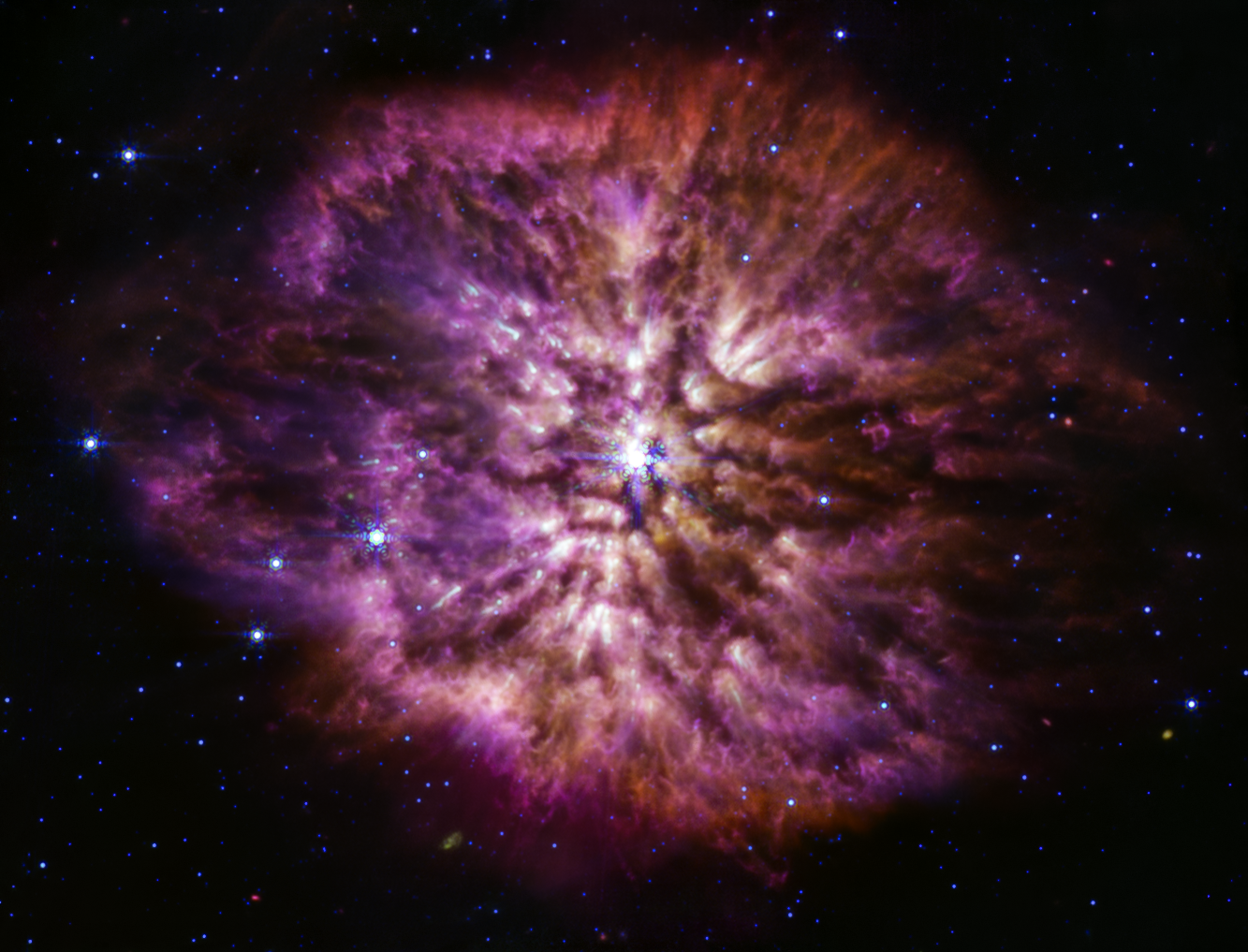
If the gas is cold, rather than hot, then it should be absorbing light from the brightened star and re-emitting it at longer, infrared wavelengths. So the next step was to turn a ground-based, infrared telescope on this star, and follow the initial observations up to see if it really was bright in the infrared.
Lo and behold, it actually was. Moreover, it was far brighter in the infrared than any normal star undergoing its typical life cycle had any right to be. The idea is that the star must have somehow:
- ejected material,
- which cooled as it expanded away from the star,
- and then condensed to form dusty molecules,
- which then got subsequently heated up by the radiation from the star,
- which caused them to emit this characteristic infrared light,
- while simultaneously absorbing optical light.
It made the researchers wonder whether this brightening in the infrared happened all at once, or whether there was some historic brightening. Fortunately, the NEOWISE data goes back for over a decade, and from its location in space, covers practically the entire sky with its infrared eyes every six months or so. Again, low and behold, not only did this source brighten all at once in the optical and infrared when the Zwicky Transient Facility saw the brightening, but NEOWISE data showed that it had begun to brighten in the infrared even earlier: before the outburst.
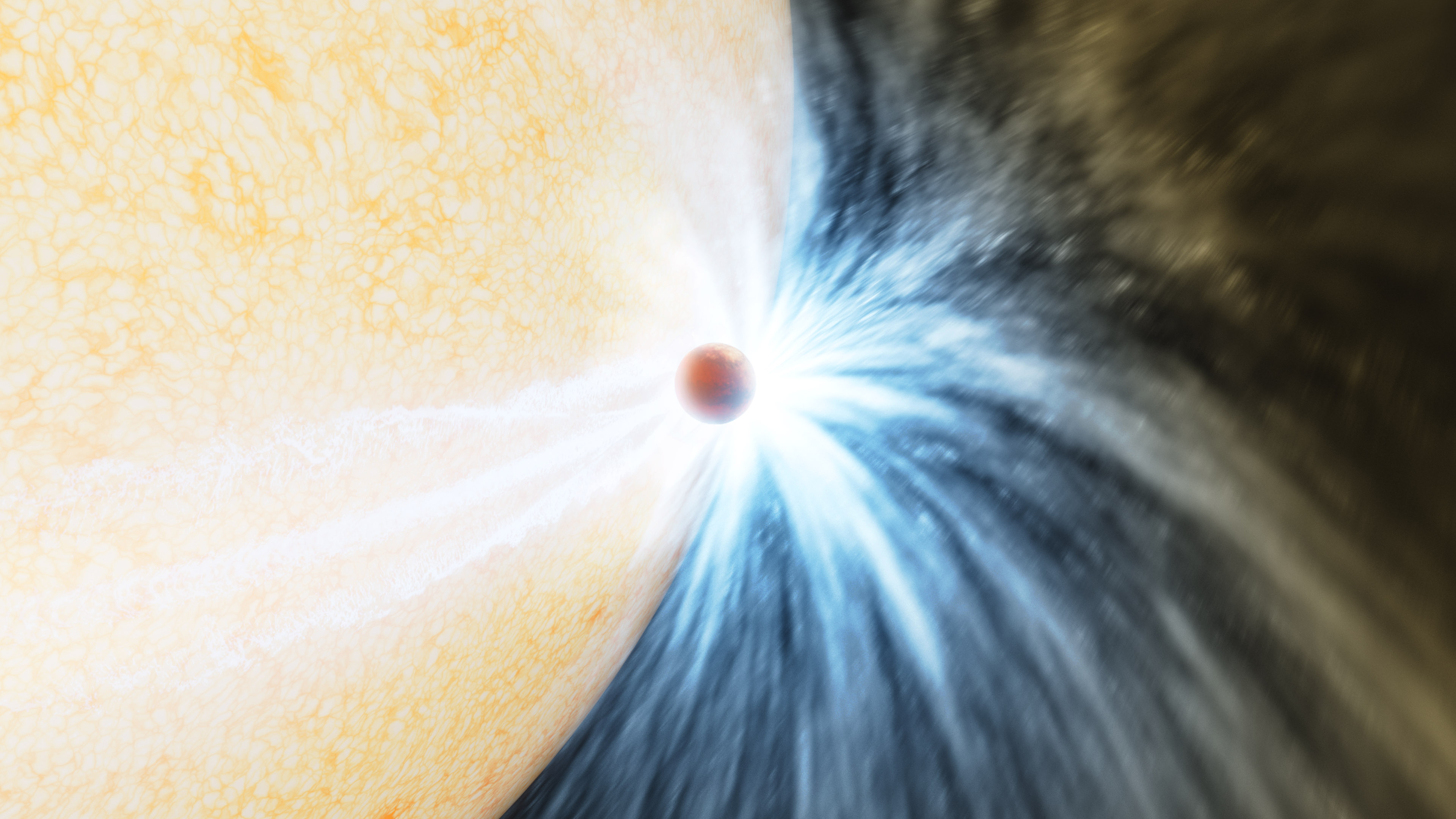
Moreover, this star itself wasn’t a main-sequence star like our Sun, but an already-evolved example of a Sun-like star, perhaps representative of how our Sun will begin behaving in something like another 5-to-7 billion years. It’s already in its subgiant phase, but hasn’t yet begun to rapidly transform into a red giant. Instead, it’s quite similar to the brightest subgiant star in our sky, Procyon, in that it’s similar to the Sun in terms of mass and temperature, but is about twice the diameter of our Sun. Based on what was observed from these multiple different telescopes over time, we can reconstruct a coarse timeline of events.
- This subgiant star began brightening, including in the infrared.
- Then an outburst happened.
- That outburst led to a rapid and severe further brightening in both the optical and the infrared.
- In the aftermath of the outburst, cold molecular dust forms around the star.
- And then, the dust gets heated, where it shines brightly in the infrared.
Although this scenario sounds strange, it’s not entirely unprecedented. Astronomers had previously seen exactly these same stages happen before, albeit with significantly different details: when two stars merge together.
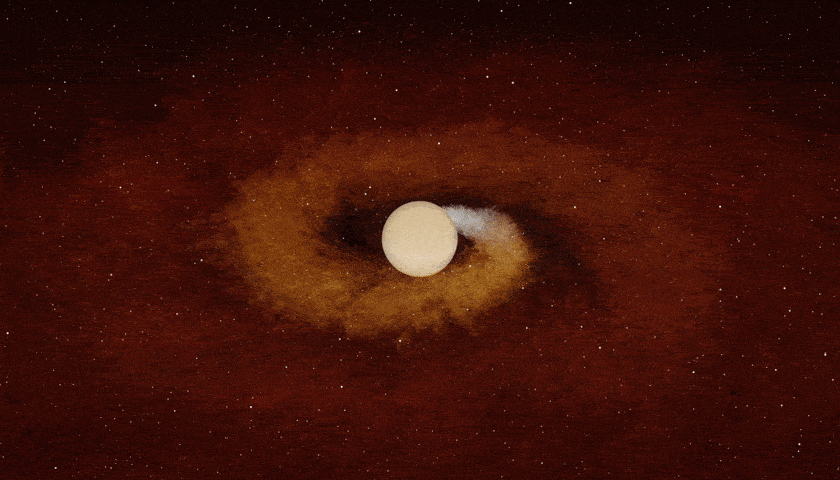
But unlike the more typical stellar mergers, this one was faint. When two stars merge together, they typically brighten by factors of tens or even hundreds of thousands; it’s a remarkably notable event. But this event was faint, brightening by only a fraction-of-a-percent of a typical stellar merger.
Why would that be the case?
That’s when the big idea hit the scientists working on this: what if the star didn’t engulf another star, but something ~1000 times fainter than the star itself: a gas giant planet, for example. In other words, it would be similar to a stellar merger, but the secondary object would be much lower in mass than a star, causing everything to be scaled down.
And everything was observed to be scaled down from the previously-observed classes of stellar mergers. There was less of a change in brightness, there was less expelled mass, there was less dusty debris surrounding the star, etc. While the Sun won’t engulf Mercury and Venus — and later, possibly the Earth, too — until it swells to become a red giant, many stellar systems have planets that orbit very close to their parent star. And in this case, a planet could have been close enough to be swallowed even during the subgiant phase.
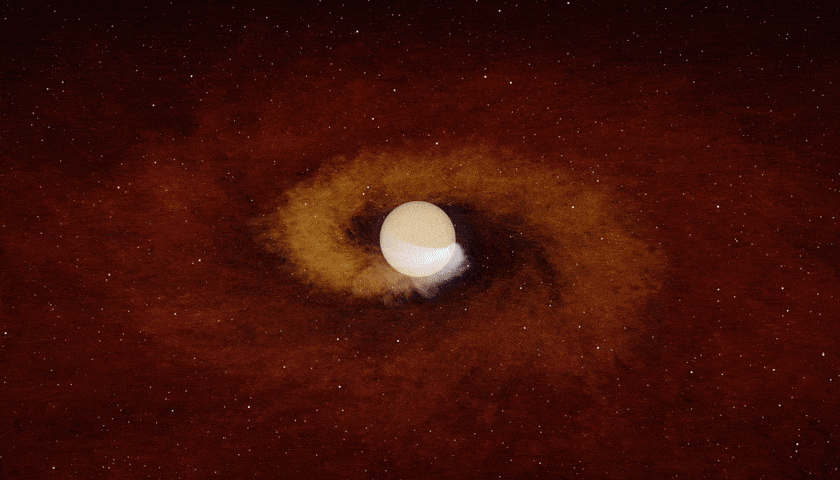
The next step in the investigation was to resort to modeling of this physical system, attempting to reproduce what had been seen. Could a secondary mass that was a brown dwarf accomplish that? What about a giant planet, such as Jupiter, or a less massive one, like Saturn? What about an even lower mass gaseous planet, like Uranus or Neptune? What about a mini-Neptune or a Super-Earth? Or what about a completely rocky planet, like Earth, Mercury, or the Moon?
It turned out that a brown dwarf would be too massive and would lead to a much bigger effect than anything that was seen. A Saturn-to-Jupiter-sized (and massed) object could lead to the observed effects, however. Smaller gaseous planets, like Uranus, Neptune, or perhaps something even slightly smaller than Neptune, could cause significant brightening, but not by a factor of a few hundred for a Sun-like star. (However, they could potentially do so for an evolved lower-mass star, since it’s the star-to-planet mass ratio that’s important.)
But rocky, Earth-like worlds or smaller can’t do this; they’d only create a small perturbative effect in the brightness of the star. Our Sun will never have an outburst like this, but any star with a “hot Jupiter” planet orbiting it just might!
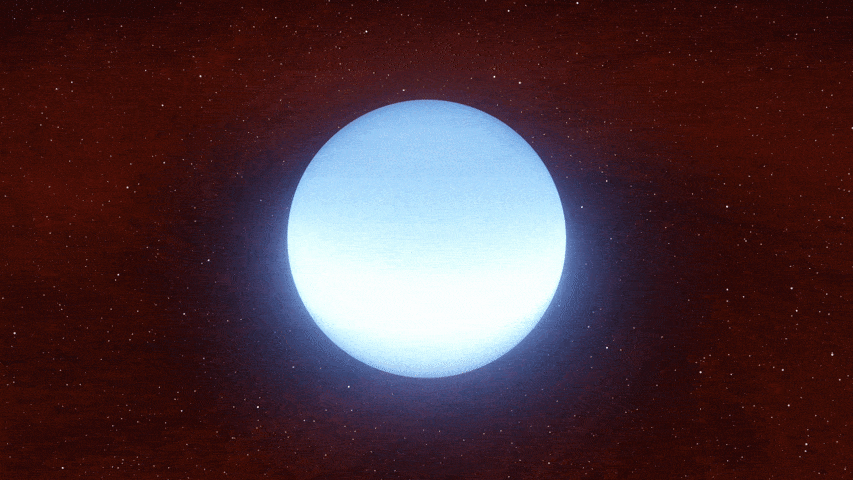
With all of the data collected, over time and over multiple different wavelengths, we can be confident that we did indeed see a planet getting devoured by its parent star. Moreover, the success of simulations in reproducing the details of this merger have led us to formulate a mechanism for how all of this occurs.
- When the planet is close to but still outside the star itself, it causes material to be ejected radially outward from the star-planet system.
- When the planet contacts the star, it rapidly gets destroyed in just a few orbits, causing the star to brighten and swell.
- The expelled material expands and cools off, forming molecules, which get heated by the newly brightened star.
- And then, over time, the star returns to its pre-brightened state, having increased in mass by only a fraction-of-a-percent.
That last component has now been observationally confirmed: the star has indeed returned to its initial, pre-merger-event brightness and color, and will now continue on its gradual evolution into a red giant. Stars really do devour their planets, and as our observational capabilities continue to improve, this will likely be only the first object in an entirely new class of astronomical phenomena. Now that we’ve seen and identified a star actively devouring one of its inner, giant planets, more are sure to follow!
